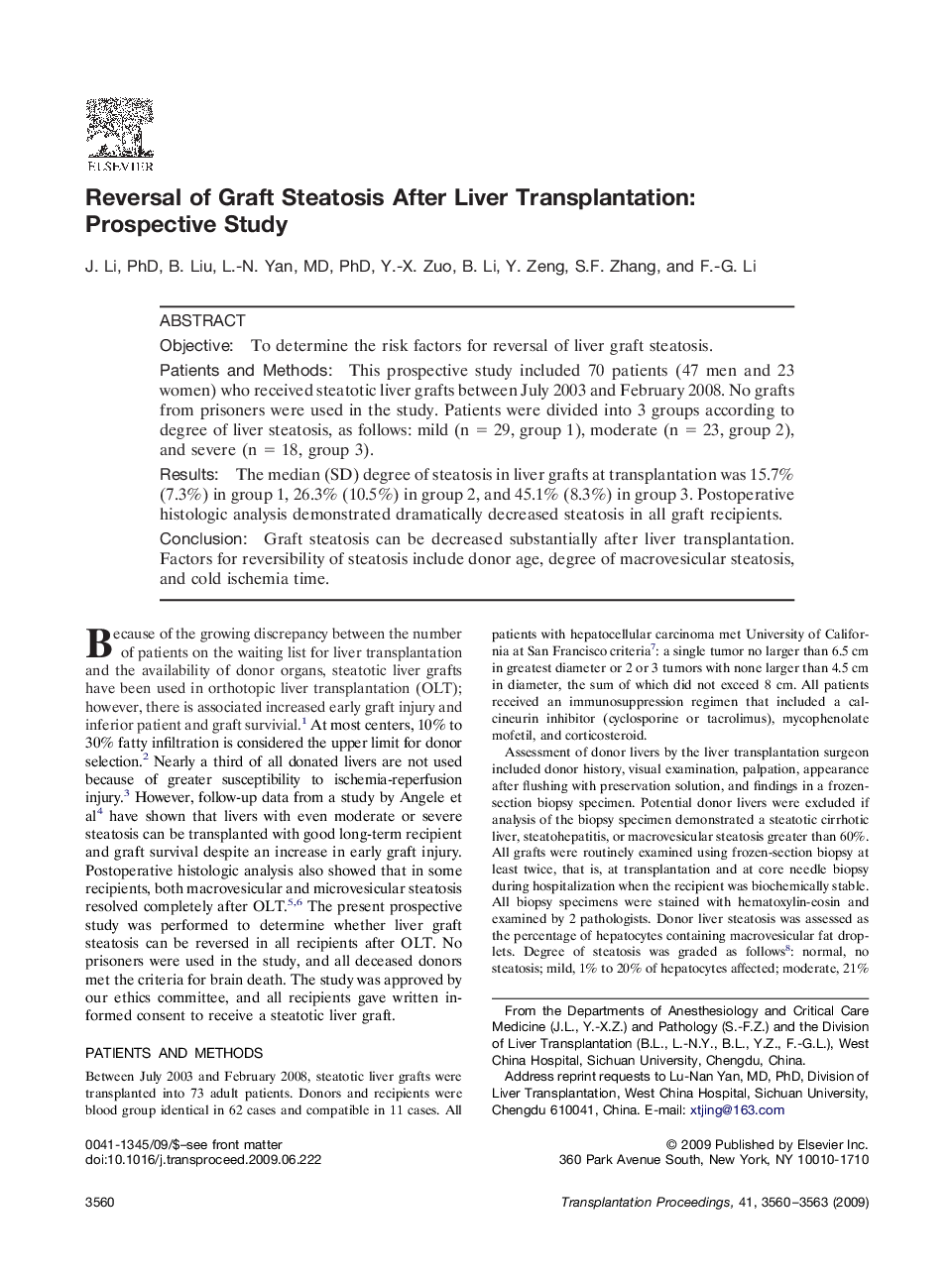| Article ID | Journal | Published Year | Pages | File Type |
|---|---|---|---|---|
| 4261200 | Transplantation Proceedings | 2009 | 4 Pages |
ObjectiveTo determine the risk factors for reversal of liver graft steatosis.Patients and MethodsThis prospective study included 70 patients (47 men and 23 women) who received steatotic liver grafts between July 2003 and February 2008. No grafts from prisoners were used in the study. Patients were divided into 3 groups according to degree of liver steatosis, as follows: mild (n = 29, group 1), moderate (n = 23, group 2), and severe (n = 18, group 3).ResultsThe median (SD) degree of steatosis in liver grafts at transplantation was 15.7% (7.3%) in group 1, 26.3% (10.5%) in group 2, and 45.1% (8.3%) in group 3. Postoperative histologic analysis demonstrated dramatically decreased steatosis in all graft recipients.ConclusionGraft steatosis can be decreased substantially after liver transplantation. Factors for reversibility of steatosis include donor age, degree of macrovesicular steatosis, and cold ischemia time.
